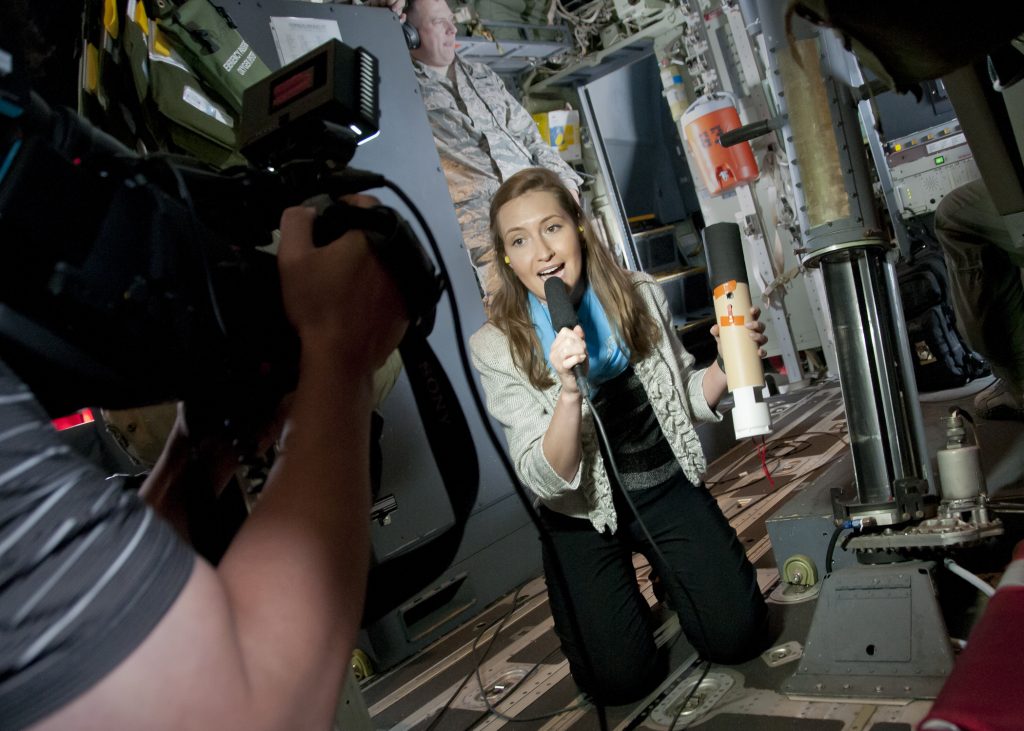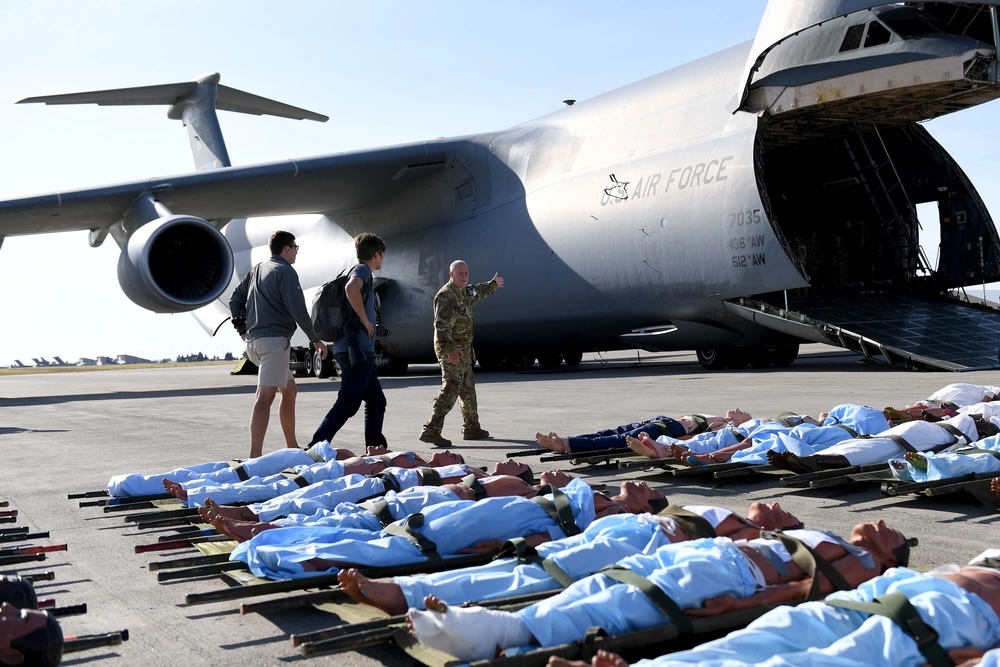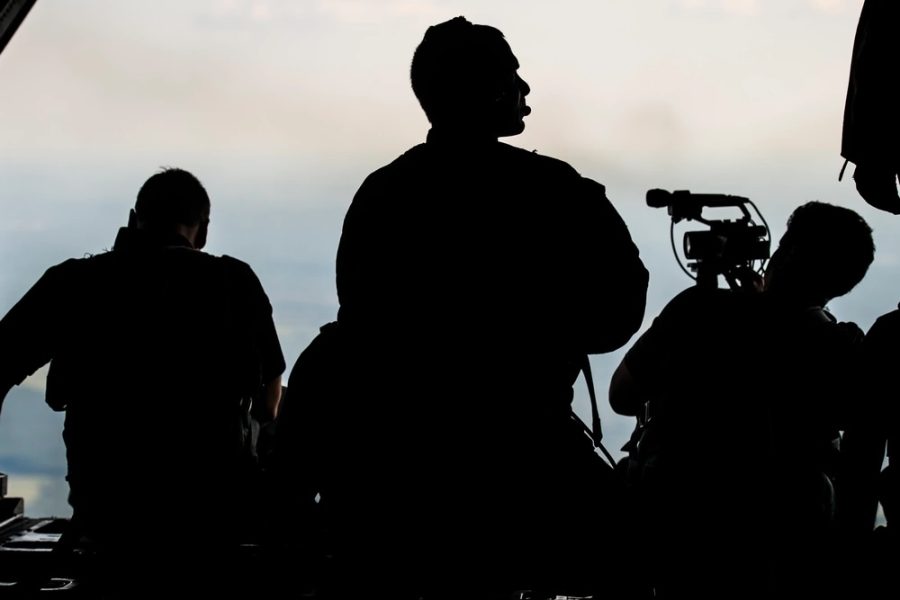Air Force Times, its sister Military Times publications, and Defense News—for decades among the leading publications in their sectors—have endured multiple rounds of layoffs over the years as the internet remade the media landscape. But on July 12, Sightline Media Group, which owns those publications, C4ISRNET, and, until earlier this month, Federal Times, laid off nine reporters and editors, leaving Air Force Times without its principal editor or its only reporter.
Combined with earlier layoffs in March, the cuts left Sightline Media Group with a skeleton crew of just 15 U.S.-based journalists, less than half of the 31 it started 2024 with.
Among those most recently laid off were Air Force Times Editor Rachel Cohen, Air Force Times Senior Reporter Courtney Mabeus-Brown, Military Times Managing Editor and Marine veteran James Clark, Marine Corps Times editor Andrea Scott, and Army Times Senior Reporter Davis Winkie, an Air National Guardsman. The five are some of the most experienced journalists on the military personnel beat, which enjoys far fewer outlets providing regular coverage than weapons and platforms do.
Winkie, the Air Guardsman, was laid off while on military leave. “I felt sadness for our readers, who now have nine fewer journalists covering issues that matter to them. … They are at risk of losing a key vector for accountability, for staying informed, for having a voice of their own.”
Sightline’s latest layoffs came just five weeks after its staff voted to unionize in a bid to improve their working conditions, and the Sightline Media Union immediately filed charges of illegal labor practices with the National Labor Relations Board, the independent federal agency that enforces U.S. labor law. Sightline staff said the company has a history of undervaluing its reporters and the journalism they produce.
The company, a corporate member of the Air & Space Forces Association, did not respond to requests for comment from Air & Space Forces Magazine.
Storied History
Military Times has a long history of impactful coverage. In the early 1990s, Gen. Colin Powell, then Chairman of the Joint Chiefs of Staff, held the papers up during a Congressional hearing about the post-Cold War drawdown, quoting page-one headlines and noting that his troops “don’t read the New York Times or the Los Angeles Times, but the Army Times, Air Force Times, and Navy Times.”
As early as the U.S. invasion of Panama in 1989, it sent reporters to cover troops in and supporting combat operations, including in Iraq, Rwanda, Somalia, Haiti, Bosnia, Kosovo, Afghanistan, Iraq again, and numerous other locations.
In the 2000s, Military Times reporters broke the story of service members sickened by toxic smoke generated from overseas burn pits, highlighted the growing prescription of psychotropic drugs for military members in Iraq and Afghanistan, and campaigned for appropriate recognition of military heroes. Military Times reporters experienced combat operations first hand while embedded with troops in Iraq and Afghanistan, pored over military data to track a surge in aviation mishaps, and revealed systemic flaws in the National Guard’s ongoing deployment to the border with Mexico.
The unique approach to coverage made the Military Times papers an important news source for service members, said the moderator of the unofficial r/Army subreddit—an online forum where Soldiers anonymously discuss Army life.
“Reporters can often make connections with ‘ground truth’ that we don’t often see,” the moderator, an Army veteran, told Air & Space Forces Magazine.
The moderator specifically called out Winkie’s recent investigation of suicide rates by brigade type, something the Army itself did not track. The investigation found suicide rates among tank brigades were higher than in other combat units, prompting Congressional action. It resonated with service members across the military, signaling that, “Yes, you really are overworked. It’s not in your head. It is a problem,” the moderator said. “The Army doesn’t provide that feedback, but Army Times did.”

Stephen Losey, the air warfare reporter for Defense News, speaking in his role as president of the newsroom union, has worked at Sightline since the early 2000s, having grown up with Air Force Times as a continuous presence in his childhood home.
In the early 2000s and 2010s, when the company belonged to Gannett, then the nation’s largest newspaper publisher, the combined newsroom employed more than 100 reporters and editors, with multiple bureaus in the United Sates and overseas, and freelancers around the world.
In those days, company leaders proudly claimed ownership of “the world’s largest military newsroom,” commanded the attention of Congress, Pentagon leaders, hundreds of thousands of subscribers, and tens of thousands of Soldiers, Sailors, Airmen, and Marines, who plunked down $3 and more for the weekly print edition, with a particular focus on personnel policy and regulations, topics largely ignored by mainstream media.
But in recent times, Losey said, wages at the company lagged behind inflation, effectively resulting in a pay cut every year, and that promised raises earlier this year never materialized. In 2015 Gannett spun off its TV holdings, digital brands, and the company now known as Sightline under the corporate brand Tegna, which soon after sold the publications in 2016 to Regent, a Los Angeles-based private equity firm. Regent reduced staff, eliminated matching contributions to its 401(k), and accelerated a decline that began around the time of the Great Recession, following the 2008 stock market meltdown.
“None of us got into journalism to get rich,” Losey said. “We love telling stories, and helping to serve and inform the military community is a meaningful calling. But at a certain point, we have to pay our rent and grocery bills, and when we go multiple years without a raise, that gets harder and harder.”
As the staff shrunk, other media properties grew, luring away talent. Still other staff migrated to major news brands, including the Wall Street Journal and Washington Post (The Air & Space Forces Association, which publishes Air & Space Forces Magazine, employs three former Military Times staffers).
The editorial staff at Sightline decided to unionize on April 8 to improve the situation and protect against lay-offs.
“We love our work: telling our readers’ stories, holding policy makers accountable and upholding the values of the First Amendment,” journalists on the union organizing committee wrote on the social media platform X in April. “We want our newsroom and colleagues to succeed. This, we believe, is how we guarantee our future.”
But Sightline Media Group did not voluntarily recognize the union, forcing staffers to take a formal vote June 3, which won unanimous support. The next step is for workers to bargain with management for a contract, but before that began, nine employees were laid off.
Besides Clark, Cohen, Mabeus-Brown, Scott, and Winkie, others let go were C4ISRNET senior managing editor Cary O’Reilly, Military Times reporter Zamone Perez, Defense News Congress reporter Bryant Harris, and Defense News Managing Editor Chris Martin. That followed the layoffs of Pentagon Bureau Chief Meghann Myers, senior editor Sarah Sicard, and multimedia reporter Daniel Woolfolk in March. Others departed voluntarily, leaving the overall Sightline newsroom with just 15 of the 31 U.S.-based journalists who worked there at the start of 2024.
“This decision significantly hampers our ability to cover the news our readers depend on,” the Sightline Media Union organizing committee wrote in a July 12 statement. The union filed a charge with the National Labor Relations Board, alleging that the company violated federal labor law by unilaterally firing unionized employees before a contract was settled.
Jessica Ramirez, a bargaining representative with the union’s parent organization, the Washington-Baltimore News Guild, said the law makes exception for employers in financial distress, but said Sightline Media Group offered insufficient evidence that this applied to the firm.
“They have to show they have a high level of economic instability, like ‘we would have to close our doors if we don’t do this,’” she explained. “In our opinion, they did not provide enough details of their financial situation to justify their decision.”
The union also filed a charge with the NLRB alleging that the layoffs were retaliatory. They cited the timing of the layoffs just a few weeks after the union election and the fact that six of the laid-off employees were part of the bargaining unit that had voted to unionize.
If the NLRB upholds the claims, it could levy damages, fines, or backpay for the laid-off employees, but NLRB reviews often take months to complete. In the meantime, the union still plans to bargain for a contract for the journalists who remain at Sightline and negotiate severance pay for those laid-off.
“These people believe strongly in their work and spent their careers supporting the military community through their journalism,” Losey said. “We want to make sure they get what they deserve.”

A Growing Gap
Regent, Sightline’s owner, is hardly alone among cost-cutting private equity firms that own military media properties. Task & Purpose, another military news publication, suffered a wave of editorial staff departures, including this reporter, after it was acquired by North Equity LLC and its media company, Recurrent Ventures.
Such losses reduce the public’s understanding of the military at a crucial time, observers say.
Katherine Kuzminski, Deputy Director of Studies and the Director of the Military, Veterans, and Society Program at the Center for a New American Security, a Washington, D.C.-based think tank, said the civilian-military divide has grown wider in the 50 years since the transition to an all-volunteer force in 1973, but journalists who specialize in the military beat can help close that gap.
“On the one hand, fewer journalists can lead to less attention paid to quality of life-related issues for service members,” she said. “On the other hand, it can do the opposite, which is essentially build a military that lives on a pedestal not reflective of reality. Then it’s easier for civilians to be disillusioned when the military does not live up to that pedestal.”
On July 21, Losey accepted an Aerospace Media Award for best military aviation submission on behalf of Rachel Cohen, who had been laid off a week earlier. His comments, made at a gathering of international aerospace media and industry professionals, was captured on video and posted on social media.
“A newsroom is made up of people,” Losey said. “It can only thrive as long as there are people there.”
